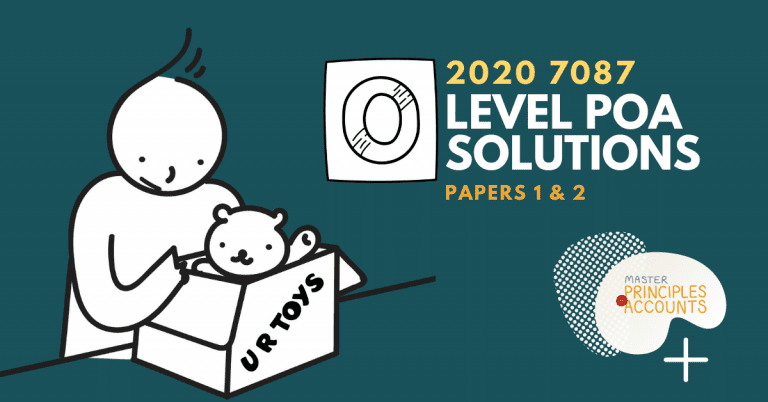Electronic Deferred Payment (EDP): Singapore’s Digital Solution as Corporate Cheques Get Discontinued
Hey, what’s up? This is something we’re really passionate about here at Master Principles of Accounts. Now, Singapore’s payment landscape is undergoing a massive transformation with Electronic Deferred Payment (EDP) and EDP+ systems, and if you’re in business or studying accounting, you absolutely need to know about this corporate cheques discontinued timeline.
Corporate Cheques Discontinued: What’s Actually Happening?
Let me break this down for you. Corporate cheques discontinued in Singapore isn’t just a rumor – it’s happening with specific deadlines that every business needs to be ready for. The Monetary Authority of Singapore (MAS) made this official announcement, and here’s exactly what you need to know.
Key dates for corporate cheques discontinued:
- January 1, 2026: No more new SGD corporate chequebooks being issued by banks
- January 1, 2027: Banks stop processing SGD corporate cheques entirely – any cheques presented after this date won’t be honored
Now, before you panic, let me be clear – this corporate cheques discontinued policy only affects SGD corporate cheques. Personal cheques, USD cheques, and Cashier’s Orders? They’re staying put for now.But here’s the thing that gets me excited about this change: Singapore isn’t just taking away an old system without giving us something better. They’re rolling out Electronic Deferred Payment systems, and trust me, once you understand how EDP and EDP+ work, you’ll see why this is such a game-changer.
Electronic Deferred Payment (EDP) and EDP+: Your Digital Replacements
So what exactly is Electronic Deferred Payment? Think of EDP as the digital replacement for post-dated cheques, but with superpowers. We’ve got two versions that launched on July 28, 2025: EDP and EDP+.
Understanding Electronic Deferred Payment (EDP)
Electronic Deferred Payment (EDP) works just like your traditional post-dated cheque. You issue it today, set a future payment date up to six months away, and the money only leaves your account when the payee actually presents the EDP for payment. The payee then has a six-month validity period to present it. Pretty straightforward, right?
EDP Plus (EDP+): Enhanced Security Features
But here’s where it gets interesting. EDP+ – now this is where we see real innovation in Electronic Deferred Payment systems. With EDP+, the funds get deducted from your account immediately when you issue the payment. This means the money is essentially “locked away” for that specific payment. No more worrying about insufficient funds when the payee tries to cash it in.
Think about it from a business perspective – if you’re the one receiving payment, which would you prefer? EDP+ gives you that peace of mind that the money is definitely there waiting for you.
Why Electronic Deferred Payment Makes Perfect Sense
Now, you might be wondering, “Why are we moving away from something that’s worked for decades with corporate cheques discontinued?” Great question! Let me walk you through the reasoning behind this Electronic Deferred Payment transition.
First off, cheque usage has been declining rapidly. When fewer people use a system, it becomes more expensive to maintain. The Monetary Authority of Singapore looked at this and said, “We’re spending way too much money processing fewer and fewer cheques.”
But beyond the economics, Singapore has this vision of becoming a truly innovative e-payments society. This corporate cheques discontinued policy? It’s part of a much bigger digital transformation strategy using Electronic Deferred Payment systems. Plus, let’s not forget the environmental benefits – we’re talking about eliminating tons of paper and all the transportation involved in physical cheque processing.
The Real Game-Changers: What EDP and EDP+ Bring to Your Business
Here’s where I get really excited about these new Electronic Deferred Payment systems. The benefits aren’t just theoretical – they’re practical improvements you’ll notice immediately:
Real-time updates: Remember waiting days to find out if a cheque cleared? With EDP and EDP+, you get instant status updates. You know exactly when an Electronic Deferred Payment is issued, when it’s presented, and when it’s settled.
[SUGGESTED IMAGE 3: Screenshot mockup showing “Real-time EDP Status Updates Dashboard”]
Simplified reconciliation: This is huge for accounting. No more manually matching paper cheques with bank statements. The digital integration means your accounting software can automatically track these Electronic Deferred Payment transactions.
Fewer errors: Human mistakes with cheque processing – wrong amounts, damaged cheques, signature issues – these problems virtually disappear with EDP and EDP+ digital payments.
Environmental impact: We’re contributing to sustainability by eliminating all that paper and physical transportation with Electronic Deferred Payment adoption.Right now, you can access EDP and EDP+ through seven major banks: Citibank Singapore, DBS, HSBC, Maybank, OCBC, Standard Chartered Bank, and UOB. That’s pretty comprehensive coverage for most businesses transitioning from corporate cheques discontinued
Accounting Fundamentals Still Apply with Electronic Deferred Payment
Now, here’s something crucial that I want every accounting student and professional to understand: even though we’re going digital with Electronic Deferred Payment, the core accounting principles we teach haven’t become obsolete. In fact, they’re more important than ever.
Timing differences – remember this concept? It’s not going away with EDP. You might record an Electronic Deferred Payment in your books, but the actual cash doesn’t leave your account until the payee presents the EDP. That’s still a timing difference you need to track and reconcile.
Even with EDP+, where funds are deducted immediately, you still need to understand exactly when that deduction happens and how it affects your cash flow in your Electronic Deferred Payment accounting.
Bank reconciliation – this is still absolutely fundamental with Electronic Deferred Payment systems. Yes, EDP and EDP+ give us better traceability and fewer manual errors, but you still need to ensure your internal records match your bank statements.
[SUGGESTED IMAGE 4: Flowchart – “Bank Reconciliation Process for EDP and EDP+ Transactions”]
The HBUL method we teach – Have, Buy, Use, Left – that framework is still your go-to approach for updating cash book balances with Electronic Deferred Payment records. Digital or not, you’ll still have bank charges to account for, interest to record, and discrepancies to investigate.
Practical Implementation of Electronic Deferred Payment
Here’s something that becomes even more important as we adopt Electronic Deferred Payment: understanding the practical implementation. The ease of EDP and EDP+ transactions means we need to understand how they integrate with our existing accounting systems and internal controls.
The Electronic Deferred Payment environment offers incredible efficiency, and it also enhances our ability to maintain accurate financial records through better digital audit trails and automated tracking systems.
Getting Ready for the Electronic Deferred Payment Future
So where does this leave you with corporate cheques discontinued and Electronic Deferred Payment taking over? Whether you’re a student preparing for your accounting career or a business owner managing day-to-day operations, the message is clear: start preparing now.
For businesses, don’t wait until 2026 to explore your Electronic Deferred Payment options. Talk to your bank, understand how EDP and EDP+ work with your current systems, and start transitioning your processes gradually before corporate cheques discontinued deadlines hit.
For accounting students and professionals, this Electronic Deferred Payment shift represents an incredible opportunity. Yes, you need to understand the technical aspects of EDP and EDP+ systems, but more importantly, you need to see how they enhance rather than replace fundamental accounting principles.
[SUGGESTED IMAGE 5: Step-by-step infographic – “Business Transition Checklist: From Corporate Cheques to EDP”]
Your Next Steps with Electronic Deferred Payment
We’re passionate about helping our students and the business community navigate these Electronic Deferred Payment changes successfully. The principles we’ve been teaching since 2018 – attention to detail, understanding of timing differences, proper reconciliation techniques – these are exactly what you need to master the EDP and EDP+ landscape.
This transformation isn’t just about learning new software or Electronic Deferred Payment methods. It’s about applying solid accounting fundamentals in a more efficient, more transparent EDP environment. And that’s something we should all be excited about.
The digital revolution in payments is here with Electronic Deferred Payment systems, and it’s going to make our work as accountants more interesting, more efficient, and more impactful than ever before. We invite you to embrace this change and join us in mastering EDP and EDP+ tools while staying grounded in the principles that make great accountants.
[SUGGESTED VIDEO 3: Create “EDP vs Traditional Cheques: Accounting Comparison” tutorial video]
Ready to dive deeper into how Electronic Deferred Payment changes affect your accounting practice? Let’s explore this EDP and EDP+ digital future together.
References and Sources
[1] DBS Personal Banking Singapore. Cheque Clearing. Retrieved August 8, 2025, from https://www.dbs.com.sg/personal/support/bank-cheque-clearing.html
[2] OCBC Business Banking Singapore. Help & Support – Go cheque-free. Retrieved August 8, 2025, from https://www.ocbc.com/business-banking/help-and-support/payment-collection-transactions/cheque-sunsetting
[3] Monetary Authority of Singapore. MAS Announces end-2025 Timeline to Eliminate Corporate Cheques. (2023, July 28). Retrieved August 8, 2025, from https://www.mas.gov.sg/news/media-releases/2023/mas-announces-end-2025-timeline-to-eliminate-corporate-cheques
[4] Asian Banking & Finance. Singapore launches electronic deferred payments to ease cheque phase-out. (2025, July 28). Retrieved August 8, 2025, from https://asianbankingandfinance.net/news/singapore-launches-electronic-deferred-payments-ease-cheque-phase-out
[5] SIG Singapore. Cheque Phase-Out Countdown: How Can Singapore Businesses Transition Smoothly to the New Normal of Electronic Payments? Retrieved August 8, 2025, from https://sigsg.com/cheque-phase-out-countdown-how-can-singapore-businesses-transition-smoothly-to-the-new-normal-of-electronic-payments/
[6] The Association of Banks in Singapore. EDP & EDP+ Explained Your Guide to Deferred Payments. Retrieved August 8, 2025, from https://abs.org.sg/e-payments/edp
[7] OCBC Business Banking SG. Electronic Deferred Payment. Retrieved August 8, 2025, from https://www.ocbc.com/business-banking/smes/transactions/electronic-deferred-payment



